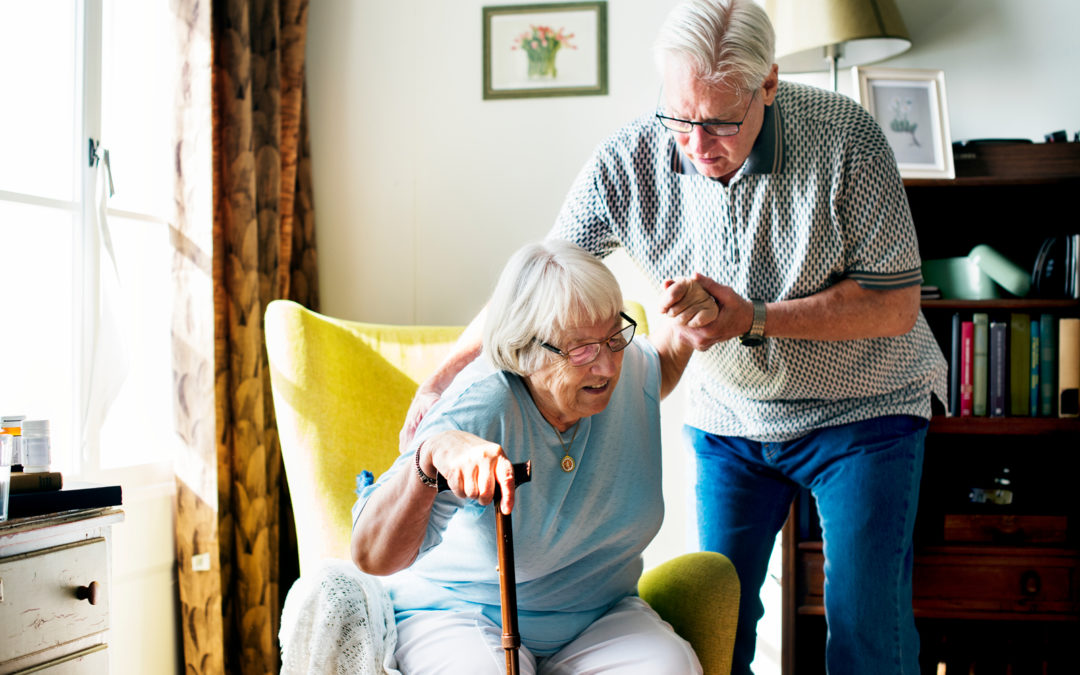Mobility: The Path to Independence and Better Health
Mobility is independence. It’s our most basic physical freedom. Last week I mentioned that walking is the first skill we learn. It is the stepping stone (pun intended) to other skills we later master. Its importance cannot be overstated.
Inability to get from point A to point B can be problematic. In my last article, I quoted the 2014 Census Bureau statistic stating over 66% of adults age 65 or older admit to problems walking or climbing stairs. It is, by far, the most common challenge faced by seniors. Today there are in the United States approximately 50 million adults age 65 or older. Simple math tells us that roughly 33 million seniors have mobility issues. That, to me, is a big number and can translate to multiple problems.
Why you ask, is walking (ambulation) so important? If we experience difficulty walking, we could have problems getting around the house to the kitchen or even the bathroom. This could translate to an inability to live independently, unable to fix meals, experiencing incontinence or developing painful sores or rashes. It may mean we cannot drive to the grocery store or go out with friends. Isolation can lead to problems of anxiety and depression. Other causes of immobility include obesity, osteoporosis, diabetes, arthritis, alcohol, smoking and joint pain. This list barely scratches the surface. I’ve left out several including dementia and Parkinson’s.
Our bodies, a compilation of bone, muscle, tissue and more, were designed to be used. Walking strengthens our bodies, and inactivity can cause a multitude of problems including issues involving cardiovascular, respiratory, musculoskeletal, neurologic, gastrointestinal, metabolic, urinary and skin functions. The cost of these problems, financially and emotionally, is staggering. It’s easy to see why health care is a billion-dollar industry.
No two people are the same. We may each have 206 bones and the same number of organs, but we age differently. I may one day suffer from a rare respiratory disease and someone else diagnosed with Alzheimer’s. A third person will run marathons until their ninety-fifth birthday.
Earlier I asked why walking is so important. That answer is easy. The benefits of simple exercise, particularly walking, far outweigh the health risks associated with immobility. A 2011 study conducted by the Center for Disease Control found that diabetics who walked more than two hours per week increased their lifespan, on average, by 39%. Prestigious institutions including AARP, the Mayo Clinic, Harvard and scores of others have amassed research showing that people who walk regularly may benefit from improved stamina, energy and weight control, may have an increased life expectancy and can reduce stress. It can also reduce the risk of coronary heart disease, strokes, diabetes, high blood pressure, bowel cancer and osteoporosis.
How does all this pertain to an aging population? Am I saying walking, or other exercises, will keep you from getting Alzheimer’s, heart disease or diabetes? Indeed not. We must adapt to our body’s changes, accepting that we must look for other ways to accomplish the same goal. We may no longer be able to play competitive team sports, so we must seek other and equally beneficial modes of exercise. Walking, perhaps the most basic and simplest of all exercises have been proven to stave off the ravages of aging and disease. Simply stated, better mobility increases the likelihood of greater independence and fewer health issues.
Walking may not be your exercise of choice. You may desire to do something a bit more challenging. In the coming weeks, I will explore other sports or exercises you may prefer. Even if, for whatever reason, you have limited mobility, there are many exercises you can do from a sitting position. I will explore these options as well. I hope you’ll join me.


Recent Comments